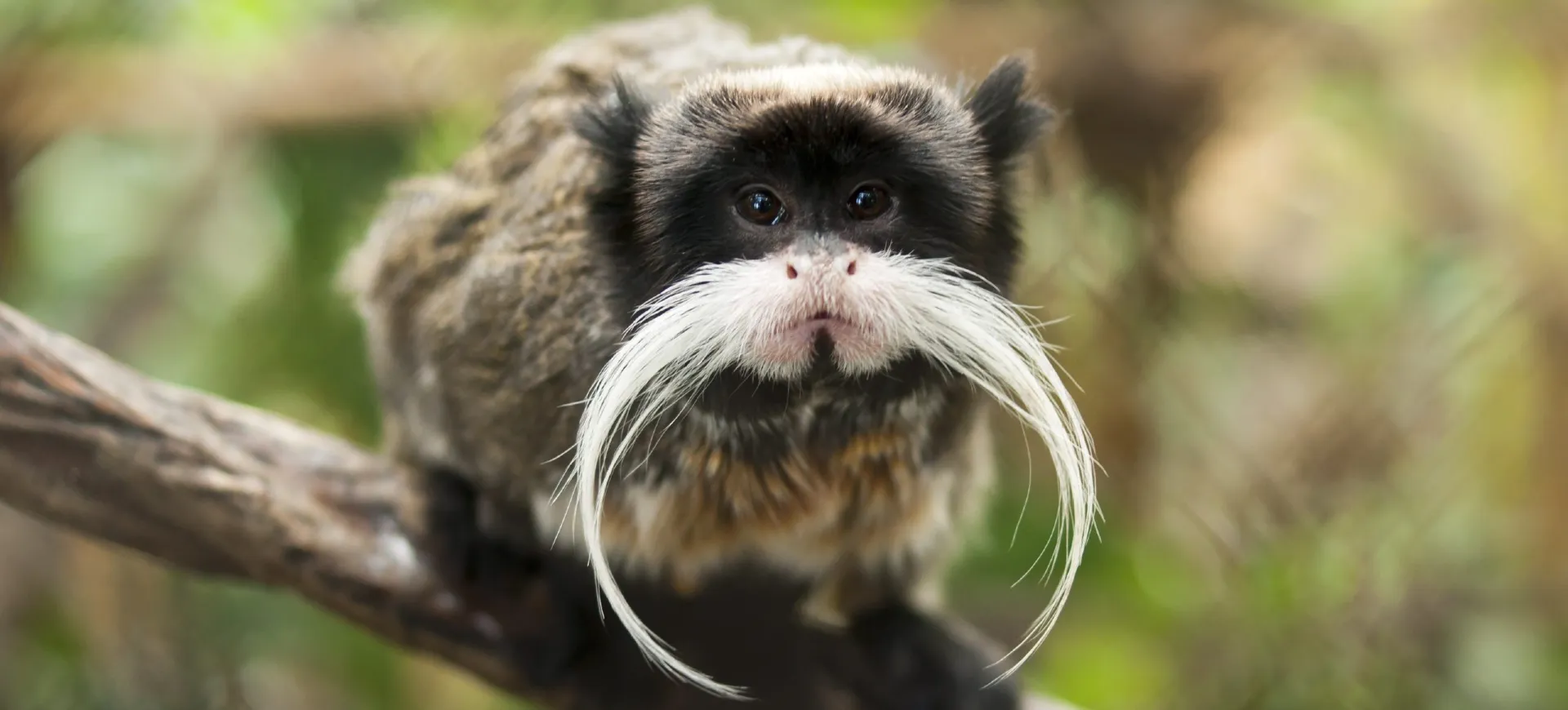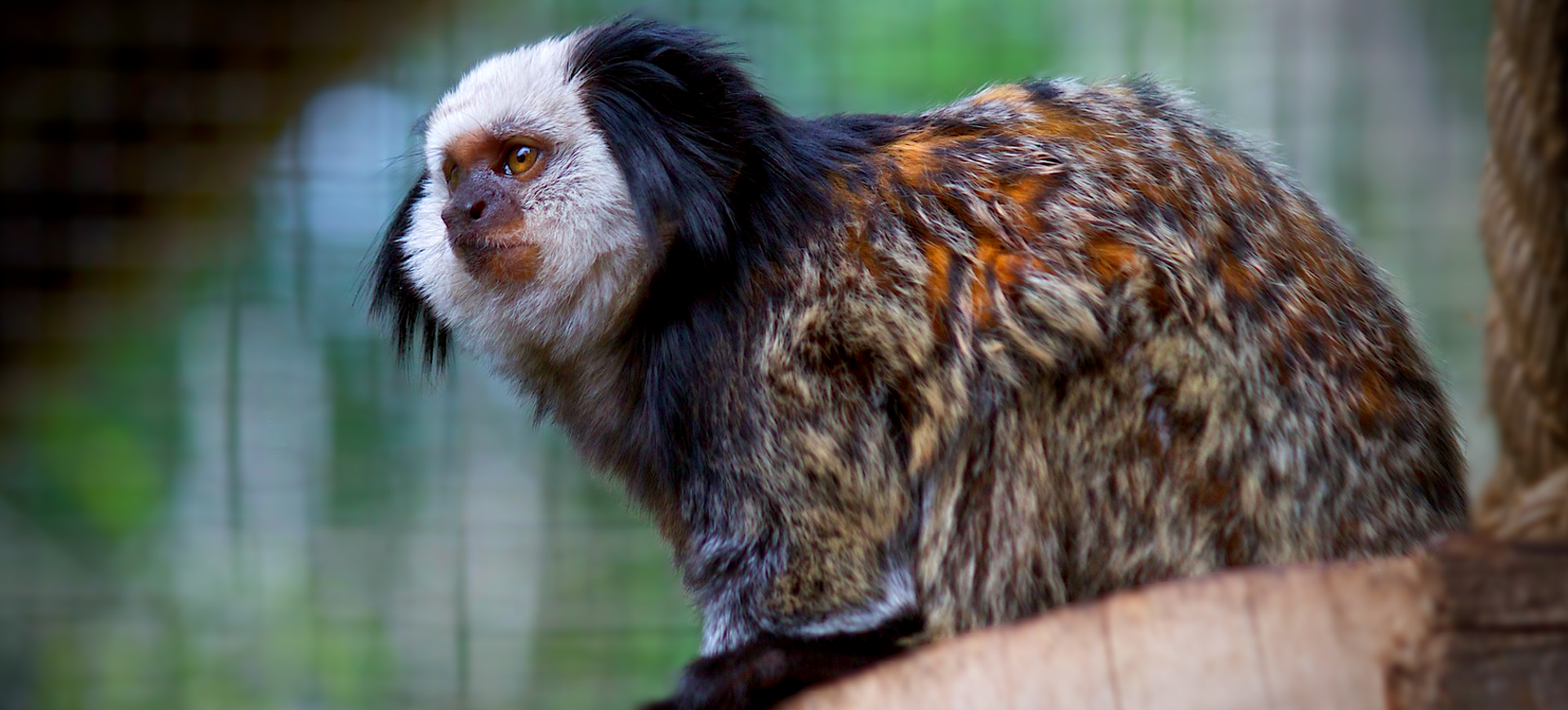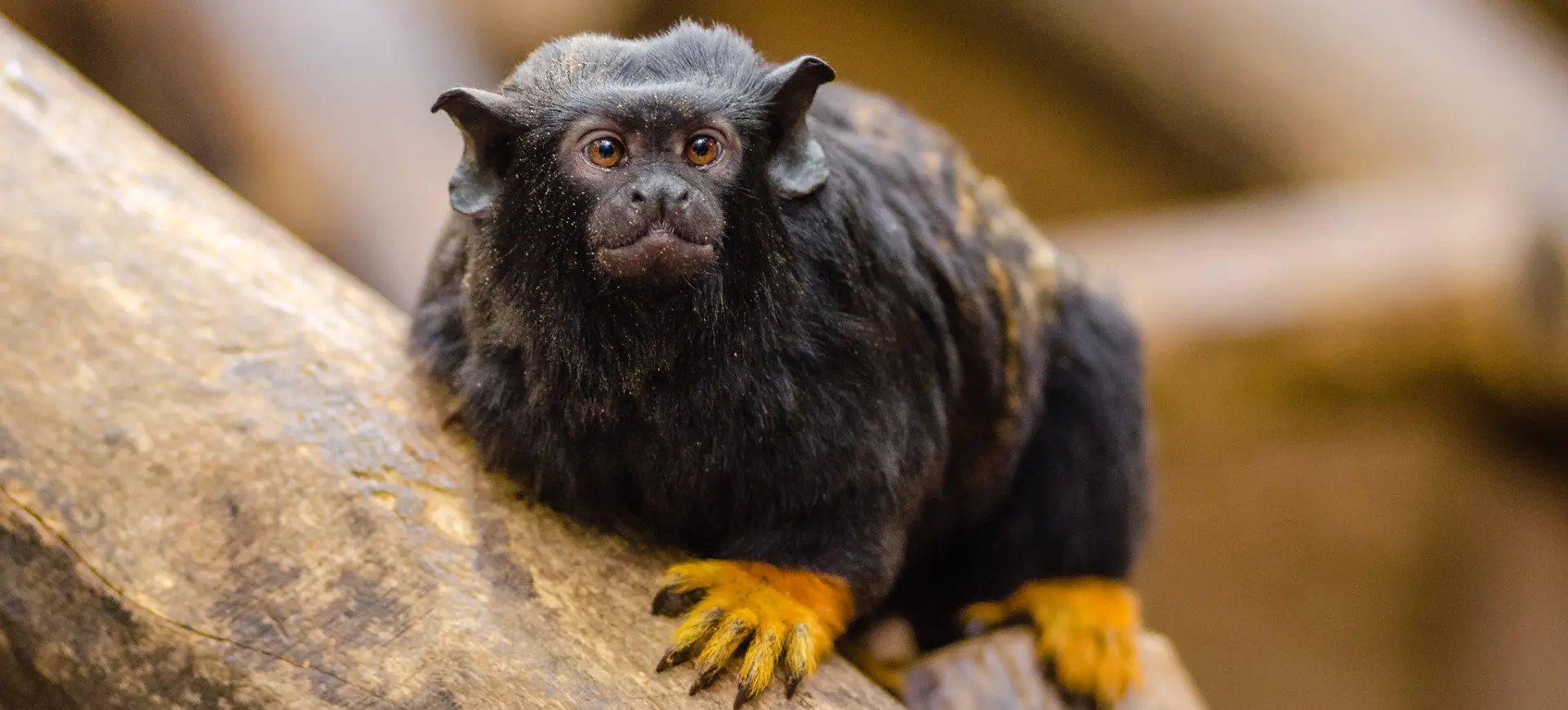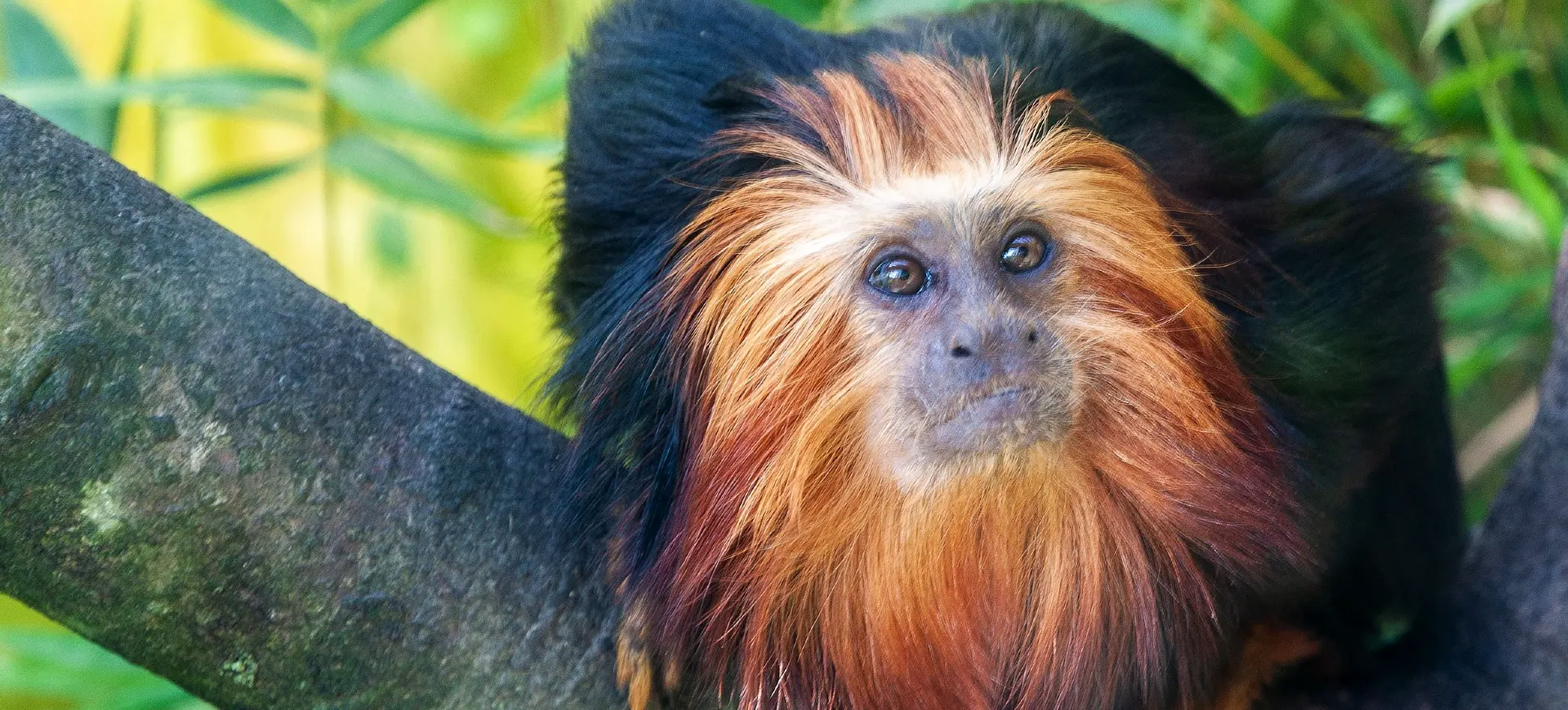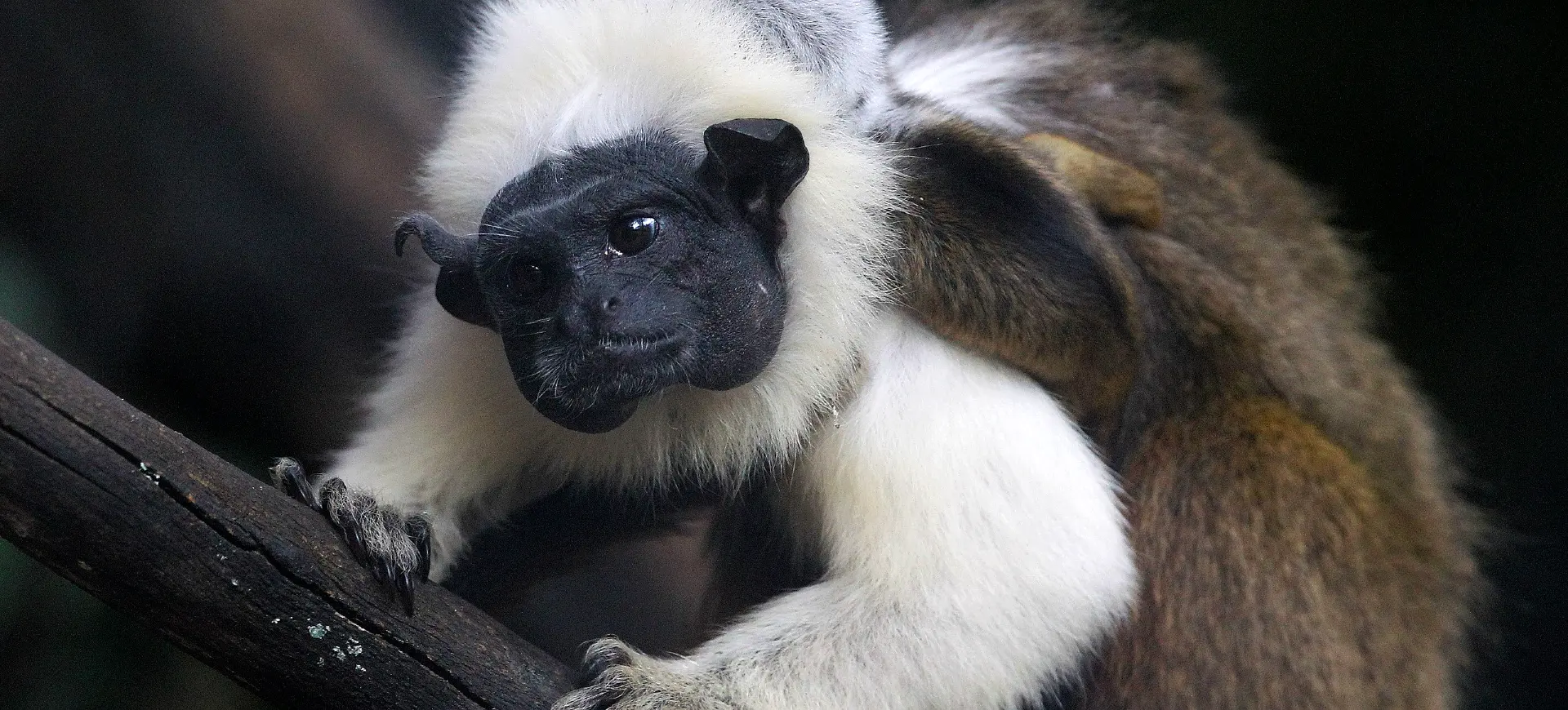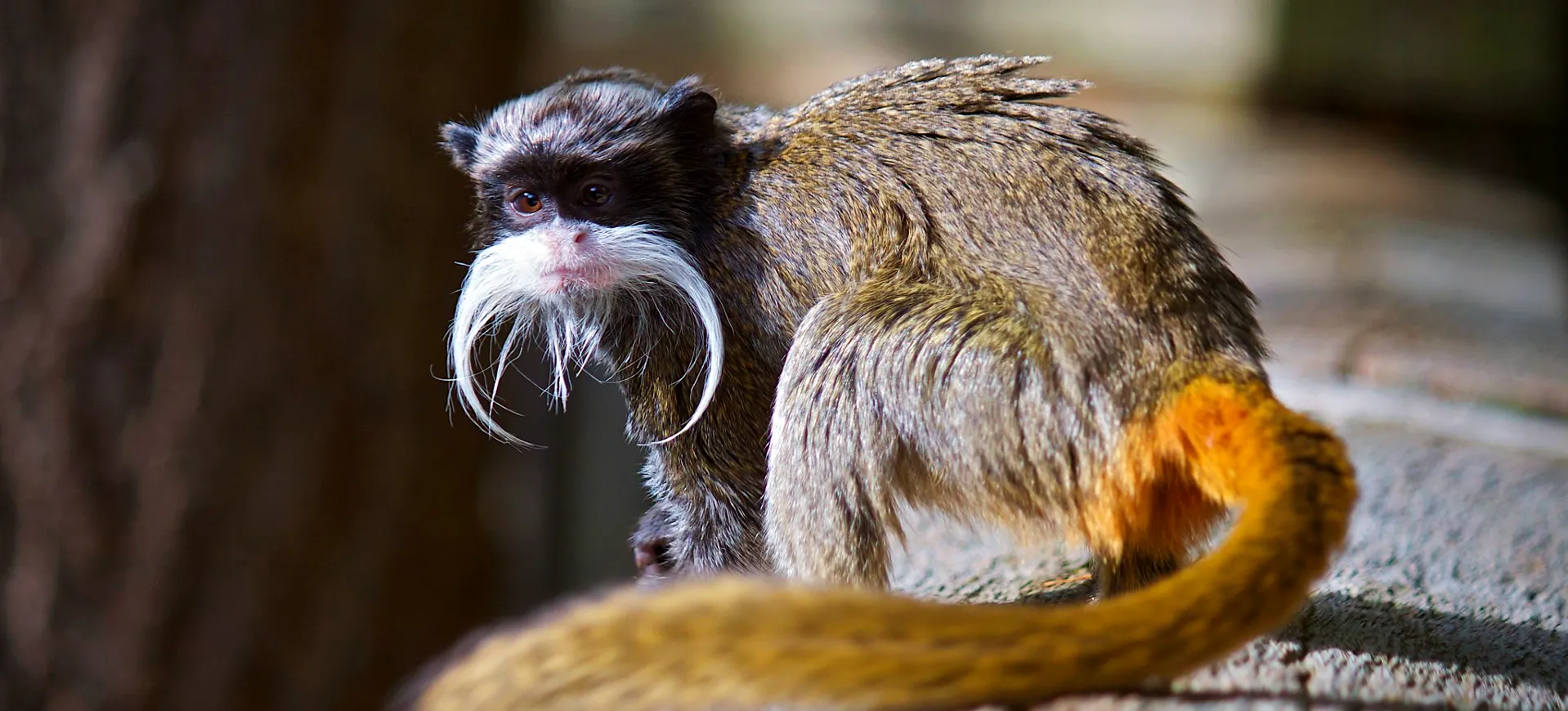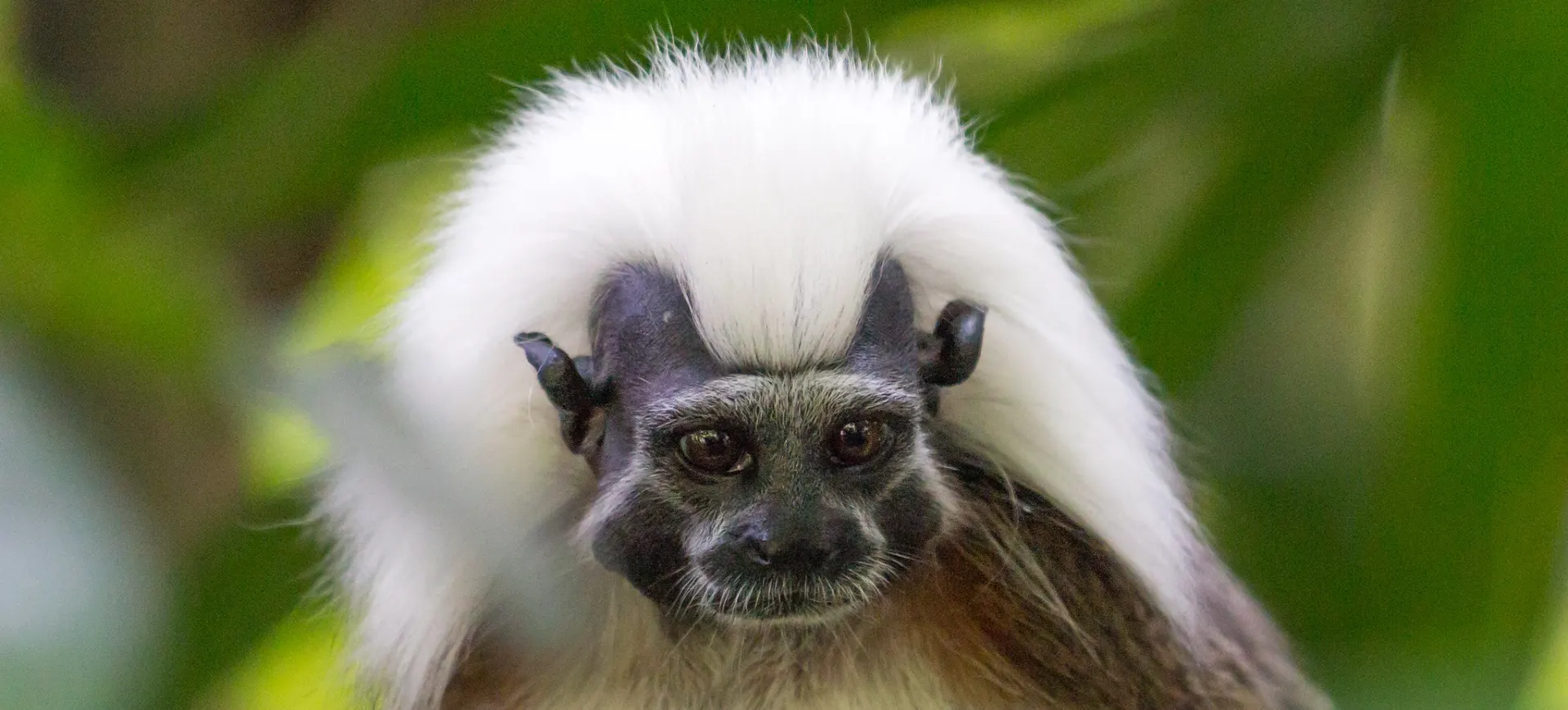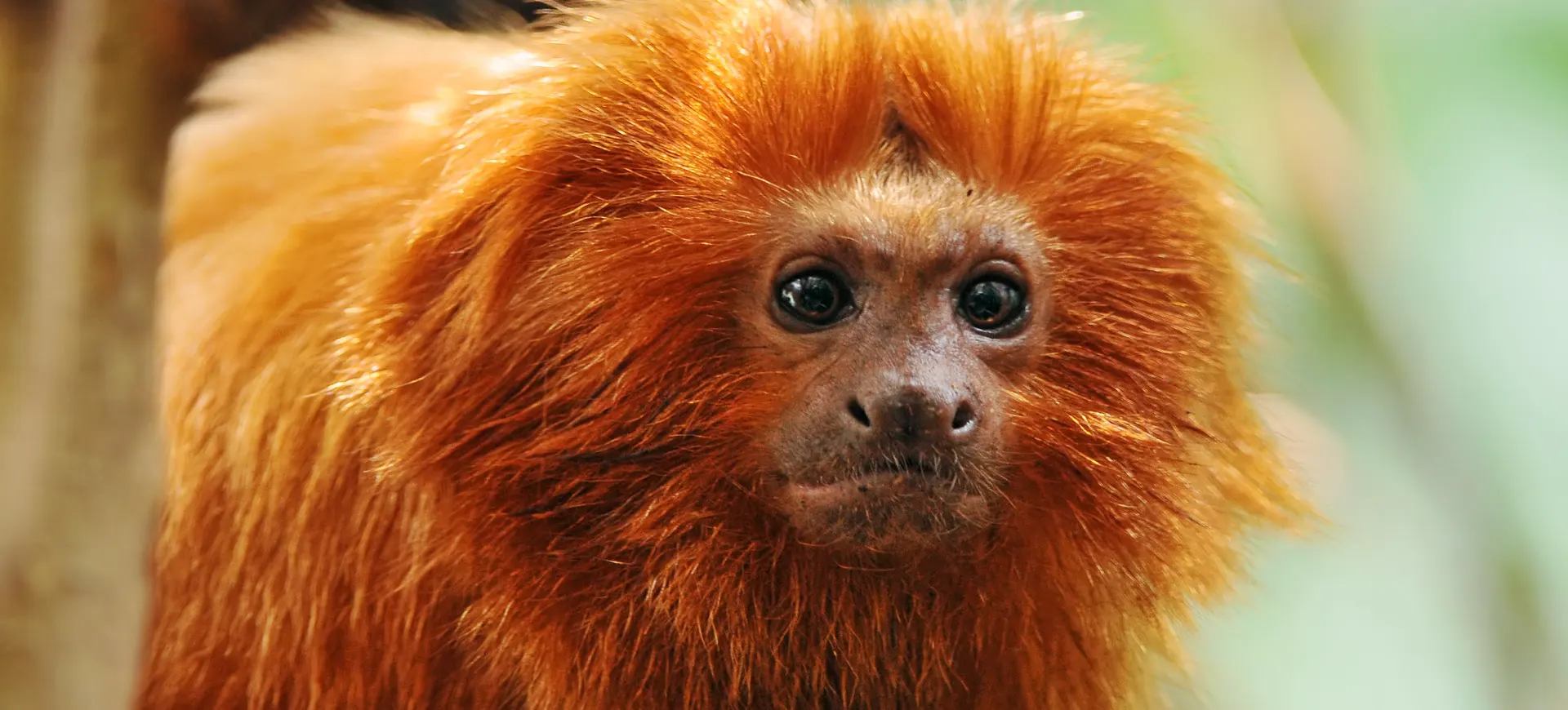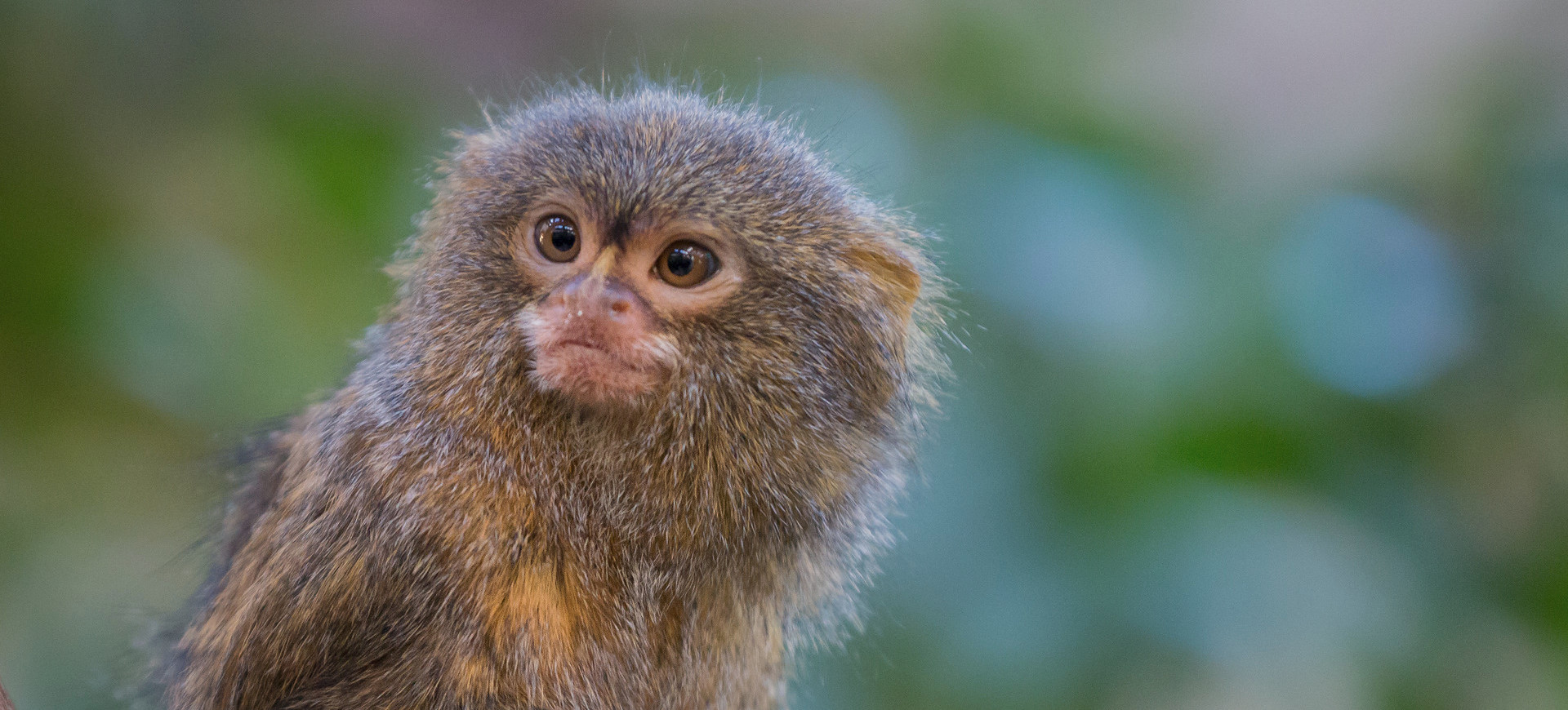Overview
Goeldi’s Monkey, scientifically known as Callimico goeldii, is a small New World primate native to the Amazon Basin. It is distinct from other monkeys in its genus due to its unique characteristics and behaviors. This Monkey typically has dark, blackish-brown fur, a mane-like feature around the neck, and a relatively long, non-prehensile tail. Goeldi’s Monkey is notable for its small stature, with an average body length of about 8 to 9 inches (20 to 23 centimeters), excluding the tail.
This species inhabits the upper Amazonian rainforests, particularly Brazil, Peru, Bolivia, and Colombia. It prefers dense, humid, mature forests, typically avoiding disturbed areas and open habitats. The Goeldi’s Monkey is well-adapted to an arboreal lifestyle, spending most of its time in the lower to mid-levels of the forest canopy. It is known for its agility and can often be seen leaping energetically between tree branches.
In terms of social structure, Goeldi’s Monkeys are highly social animals. They live in small family groups consisting of an adult pair and their offspring, with group sizes typically ranging from 4 to 10 individuals. These primates are also known for their complex vocalizations and communication, vital in maintaining group cohesion and territorial defense.
Taxonomy
Kingdom
Phylum
Class
Order
Family
Genus
Species
Type
Physical Description:
Goeldi’s Monkey has a distinctive physical appearance characterized by its dark, blackish-brown fur and mane-like features around the neck. The dense and soft fur provides insulation in its humid rainforest habitat. Its tail is relatively long and bushy, but unlike many other New World monkeys, it is not prehensile. This feature indicates a different evolutionary path from its closely related marmoset and tamarin cousins.
The monkey’s body is compact and sturdy, adapted for life in the trees. Its strong, agile limbs allow quick, bounding movements through the forest canopy. Goeldi’s Monkey has a relatively small head with large, expressive eyes, which aid in its visual acuity, essential for navigating the dense forest environment. The species exhibits sexual dimorphism, with males slightly larger and heavier than females.

Lifespan: Wild: ~10 Years || Captivity: ~20 Years

Weight: Male: 16-18 oz (450-500 g) || Female: 14-16 oz (400-450 g)

Length: Male & Female: 10-12 inches (25-30 cm)
Characteristic:
Native Habitat:
Goeldi’s Monkey inhabits the tropical rainforests of the upper Amazon Basin. Its preferred habitat includes dense, humid, mature forests with a rich understory. The species is particularly found in areas with abundant fruiting trees and a high density of insect populations. It is predominantly arboreal, rarely descending to the ground, and adept at navigating the complex forest canopy.
Their habitat range extends across several countries in South America, including Brazil, Peru, Bolivia, and Colombia. The monkeys are dependent on large tracts of undisturbed rainforest, which provide them with the necessary resources for survival. Conservation of these habitats is crucial for the species’ survival, as they are sensitive to environmental changes and habitat destruction.
Climate Zones:
Biomes:
WWF Biomes:
Biogeographical Realms:
Continents:
Diet:
Diet & Feeding Habits:
Goeldi’s Monkey is an omnivore whose diet consists of fruits, insects, small vertebrates, and plant exudates. It exhibits a unique foraging behavior, often leaping from tree to tree in search of food. The Monkey’s diet is diverse and can vary seasonally depending on the availability of food sources in its habitat. This varied diet plays a crucial role in seed dispersal and ecosystem health.
In addition to fruits and insects, Goeldi’s Monkey is also known to feed on small vertebrates such as lizards and birds. They have specialized dentition to gouge tree bark to access gum and sap, which forms a significant part of their diet. The monkeys typically forage in the lower to middle levels of the forest, but they may occasionally descend to the ground to feed.
Mating Description:
Goeldi’s Monkey exhibits a polygynous mating system, where one male mates with multiple females. However, monogamous pairings are also common, particularly in smaller groups. Mating involves elaborate vocal and physical displays by both males and females. The species is known for its strong pair bonds and cooperative parenting.
Females typically give birth to a single offspring after a gestation period of about 150 days. In cases of multiple births, usually, only one infant survives due to the high energy demands of rearing multiple young. Both parents and other group members participate in the care of the young, which includes carrying, grooming, and feeding. This cooperative care system is essential for the survival and development of the offspring.
Reproduction Season:
Birth Type:
Pregnancy Duration:
Female Name:
Male Name:
Baby Name:
Social Structure Description:
Goeldi’s Monkey lives in small, close-knit family groups. These groups typically comprise an adult pair, their offspring, and sometimes a few related individuals. Group sizes range from 4 to 10 individuals, with a strong social hierarchy. Social interactions within the group are complex, involving grooming, vocalizations, and cooperative behaviors.
The groups maintain a home range, which they defend from other groups. Territorial behavior includes vocal displays and scent marking. Within the group, there is a high level of cooperation, particularly in the care of the young. This social structure plays a crucial role in the survival and reproductive success of the species.
Groups:
Conservation Status:
Population Trend:
The wild population of Goeldi’s Monkey is considered vulnerable and is experiencing a decreasing trend. The primary cause of this decline is habitat loss due to deforestation and agricultural expansion. The species is sensitive to environmental changes, particularly the loss of dense, mature forest areas.
In addition to habitat loss, Goeldi’s monkeys face threats from hunting and the illegal pet trade, which have reduced their numbers in certain areas. Conservation efforts focus on habitat protection and sustainable land use practices to ensure the species’ long-term survival.
Population Threats:
The major threat to Goeldi’s Monkey is habitat loss and fragmentation due to deforestation for agriculture, logging, and urban development. This habitat loss reduces their living space but impacts their food sources and breeding sites. Fragmented habitats can lead to isolated populations that are more vulnerable to environmental changes and genetic issues.
Hunting and the illegal pet trade also threaten Goeldi’s Monkeys. Despite legal protections, these activities continue in some areas, impacting local populations. Climate change is an emerging threat, potentially altering the monkey’s habitat and the ecological dynamics of the rainforest.
Conservation Efforts:
Conservation efforts for Goeldi’s Monkey include protecting habitats and establishing protected areas. Large tracts of Amazon rainforest are being preserved, which is crucial for the species’ survival. Environmental laws and regulations are in place in several countries to protect their habitats and control deforestation.
Education and community involvement are key aspects of conservation strategies. Raising awareness about the importance of rainforest conservation and the role of Goeldi’s Monkey in the ecosystem can help garner support for conservation initiatives. Research and monitoring of populations are essential for understanding their ecology and informing conservation actions.
Additional Resources:
Fun Facts
- Goeldi’s Monkey is the only member of its genus, Callimico, making it unique among New World monkeys.
- Goeldi’s Monkey is the only member of its genus, Callimico, making it unique among New World monkeys.
- Unlike many other primates, Goeldi’s Monkey has a third molar in each quadrant of its mouth, a rare dental characteristic.
- They are known for their vertical clinging and leaping, an unusual locomotion style among other callitrichids.
- Goeldi’s Monkeys have extraordinary jumping abilities. They can leap over 13 feet (4 meters) between trees.
- This species is one of the few non-human primates that consume mushrooms as a part of their diet.
- Their vocalizations are quite complex and are used for various purposes including alarm calls, territoriality, and social bonding.
- Goeldi’s Monkeys are often found in symbiotic relationships with other primate species, such as tamarins, for foraging and predator detection.
- Infants are born with fur and open eyes, uncommon among small primates.
- Unlike many other primates, Goeldi’s Monkeys do not have prehensile tails.




